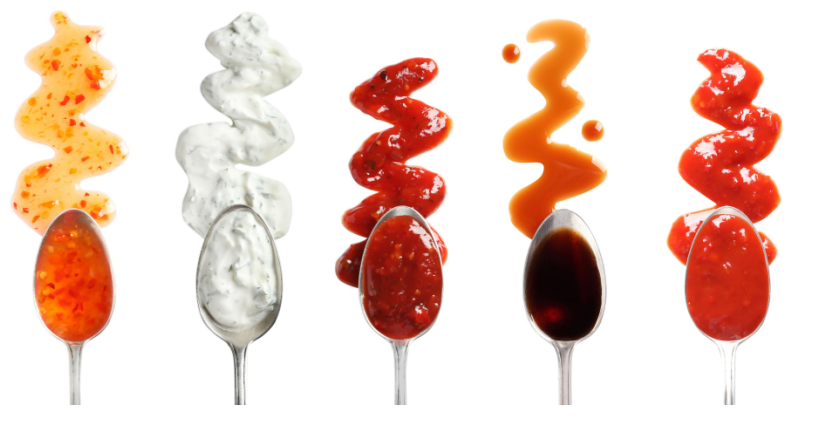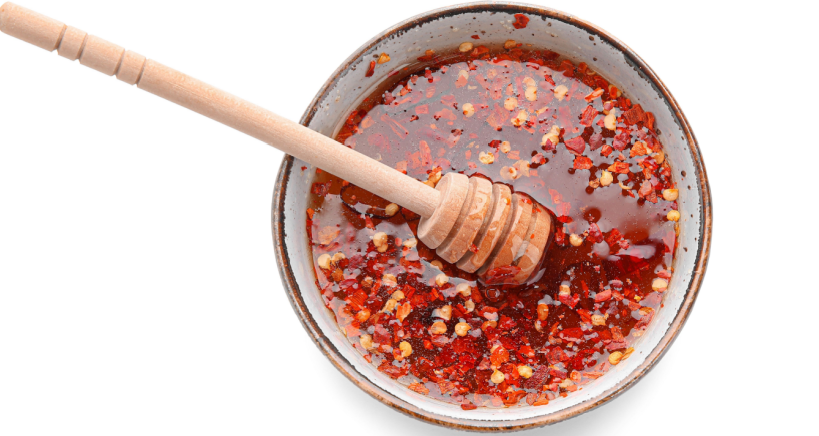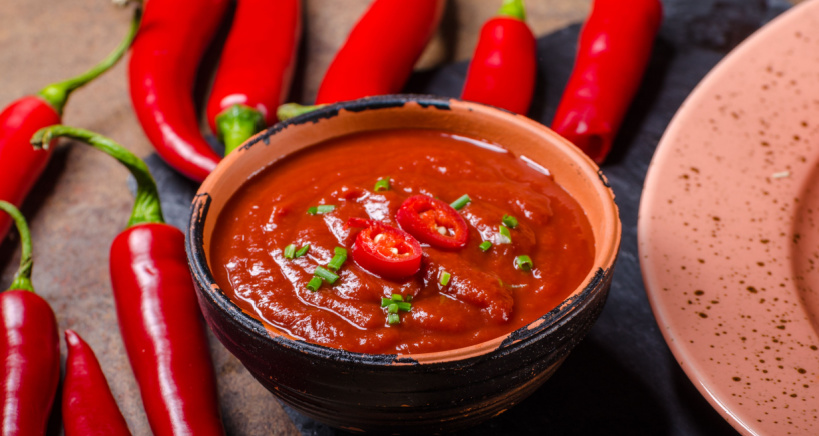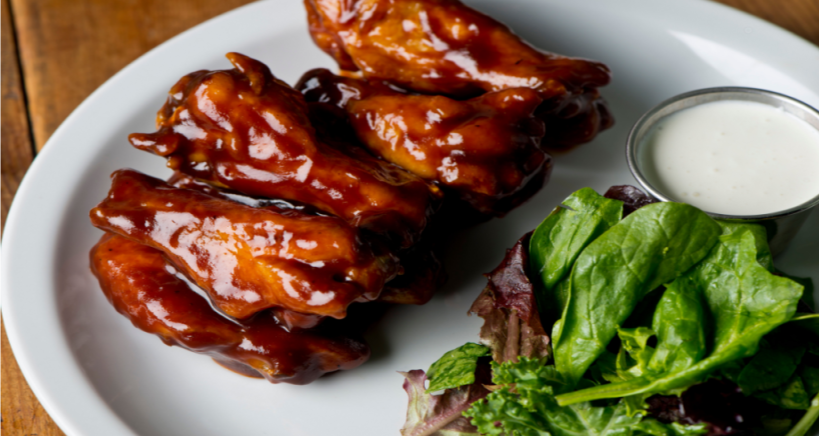
For the past fifty years, Heinz’s well-known bottle of ketchup has dominated the condiments market and America’s tables. It’s likely to continue to dominate in the coming decades. But, in addition to enjoying their ketchup, young Americans are seeking other condiment flavors to add a little zing to their plates. Some are brand new sauces, 21st century culinary inventions; others are old condiments that are now gaining popularity in the United States. A modern palate requires a modern condiment and these are the condiments that the modern paletes seem to crave most.
Hot Honey
A quick Google search for hot honey makes this condiment out to be an extremely versatile one. The first search results show recipes for pizza, wings, pineapple toast, baked cheese, cocktails, and even cobbler – all featuring hot honey. But, what is hot honey and why do young diners seem to be putting it on absolutely everything?
Hot honey, which also goes by the moniker spicy honey, is a simple sauce. It’s essentially composed of honey, infused with hot peppers and vinegar. Just like Heinz is credited with bringing ketchup to the hearts and tables of Americans, Brooklyn-native Mike Kurtz is the chef known for making hot honey so irresistible and popular. Mike’s hot honey is infused with chiles, habaneros, scorpion peppers, and vinegar (the actual recipe is a “trade secret”), bottled up, and shipped to homes and restaurants countrywide.

If you aren’t interested in shelling out $25 for a 12 ounce bottle of this sweet and spicy sauce, you can make your own hot honey. To infuse the honey, saute garlic, chiles, habaneros and any other spicy food of your choice until brown. Add honey to the pan and let it boil. Reduce the heat to a simmer and let it cook for five minutes. After the honey comes off the fire, add cider vinegar and let it cool for at least an hour.
Sriracha
When it comes to condiments, young diners “like it hot.” Sriracha, also called “rooster sauce” for the logo on the bottle of one popular sriracha brand, is a hot sauce with a cult following.
Sriracha has an interesting history. It appeared on Thai grocery shelves in the 1920’s, only a few decades after Heinz ketchup made its American debut. Thanom Chakkapak, the Thai chef who invented the condiment, named it after the city Si Racha in Eastern Thailand. Sriracha made its way to the United States in the 1980’s where Vietnamese immigrant, David Tran, marketed it through his company Huy Fong Foods, in the iconic rooster bottle.

By 2013, sriracha picked up enough popularity that a shortage of the sauce threw the culinary world for a loop. A bad year for jalapeno brought another sriracha shortage in 2022. But, if you can’t get your hands on the “rooster sauce” itself, you can replicate its flavor in your kitchen, as long as you have a week to wait until the sauce ferments.
To make homemade sriracha, blend hot peppers (you can use red jalapenos, or a substitute, like Fresno chillies, if you can’t get your hand on the jalapenos), garlic, light brown sugar, and kosher salt in a food processor. Next, put the mixture into a jar and leave it at room temperature until it ferments (you will see bubbles forming at the bottom of the jar). Two or three days after the fermentation process begins, blend the jar’s contents with distilled white vinegar. Strain the mixture into a saucepan, bring to a boil, and then simmer until the sauce thickens. Put the sauce back into an airtight jar and store it in the refrigerator.
Sriracha, like the other popular condiments, ketchup and hot honey, is pretty versatile and can enhance many dishes. Thai chefs often use the sauce in seafood dishes, but Americans have added it to burgers, soups, and even chocolate.
Gochujang Sauce
Young diners like their condiments not just a little spicy, but also a little exotic. Gochujang sauce fits right into this exotic and tangy niche. Just like sriracha, gochujang has Asian roots, and is Korean in origin. Also like sriracha, gochujang sauce is fermented. It’s been described as having a flavor somewhere in between sriracha and miso (a pungent, fermented, Japanese seasoning). Actually, it may have been the recent sriracha shortage that drove gochujang sauce’s popularity through the roof.
Gochujang isn’t such an easy sauce to make, but in Korea, many families make it from scratch and keep a jug of it lying around. The condiment is made from gochugaru (a dried chile powder), salt, sticky rice, and fermented soybeans that are allowed to ferment for months in earthenware jug. Over time, the starch in the sticky rice converts to sugars, sweetening the mixture.
Still, if you want to make gojuchang sauce at home, and don’t have the time to let your soybeans and rice ferment, you can pick up some gochujang paste from the Asian aisle in your grocery store. The paste already contains rice, soybeans, chiles, and salt. Mix the paste with sesame oil, rice vinegar, and maple syrup, and whisk it together.
Hummus
Hummus is as millennial a food as avocado toast or pumpkin spice. This condiment/dip gained massive popularity in the United states in the 2010 decade. Hummus is a Middle Eastern spread made from mashed chickpeas, lemon juice, olive oil, tahina (a sesame seed-based condiment), and spices. It’s billed as being extremely healthy, and pairs well with breads, vegetables, and crackers. Some brands have even started adding unconventional flavors, like chocolate, peanut butter, and vanilla bean, spawning a “dessert hummus” industry.
Sabra is the brand responsible for introducing hummus to the United States’ consumer market. In the early 2000’s, the company was making around seven million a year selling mostly to ex-pat Israelis in the US, missing the flavors from home, when Sabra decided to partner with major food corporations like Strauss and PepsiCo. A few decades later, the hummus market share in the United States rose to more than a billion dollars a year, with Gen Z jumping on the hummus train as well.
Hummus is surprisingly easy to make at home. To make it, blend chickpeas, tahina, garlic, salt, and lemon juice until creamy. You can use dried chickpeas as your base, as long as you soak them overnight and cook them thoroughly. Or, you can save a step, and use canned chickpeas. It is recommended to peel at least 3/4 of the chickpeas before blending them, as this will make the hummus smoother.
Ranch Dressing
Ranch dressing is another millennial staple. It is so beloved by young diners, that in 2019, Food Network ran an article asking if it was even edging ketchup out of the market. Hidden Valley, ranch’s biggest marketer, claims that nearly half of American restaurants offer ranch dressing, and three out of four US households stock the condiment.
Millennials and Gen Z’ers like putting this creamy sauce on nearly everything from vegetables to pizza to chicken nuggets, to wings to pasta to salads. Hidden Valley even recently released a gimmicky ranch dressing-flavored ice cream! To make ranch at home, whisk together mayonnaise, sour cream, chives, parsley, garlic powder, onion powder, dill, pepper, and salt and refrigerate before serving. There are also dairy-free alternatives available online.
Pink Sauce
Pink sauce is the next-generation, viral video form of ranch dressing. If hot honey and sriracha illustrate the need for spice, pink sauce typifies the TikTok food culture. Pink sauce went viral about a year ago and sparked a fair bit of controversy as well. After TIkTok user, Chef Pii, shared a video of her vivid, flamboyant Pink Sauce, videos featuring the pink sauce hashtag racked up nearly 680 million views.
After going viral, Chef Pii started selling her sauce, shipping it to intrigued social media followers, but the initial release was marred with problems. The bottles exploded in transit, the nutrition facts were inaccurate, and the product didn’t have FDA approval. The backlash against the sauce again took TikTok by storm. One influencer even faked her own death, blaming the sauce for killing her. Chef Pii has since reintroduced the sauce, this time with the issues cleared up. And, although both the controversy and the initial excitement died down somewhat, the term “pink sauce” still garners hundreds of thousands of Google searches monthly.
Pink sauce gets its gaudy coloring from the exotic tropical dragonfruit. It’s fairly easy to recreate the sauce in your own kitchen. All you need is mayonnaise (Chef Pii’s features a mayo-like blend made from scratch, but if you are making it in your kitchen, you can “cheat” and use premade mayo), dragonfruit, garlic, chili, ranch seasoning, lemon juice, distilled white vinegar, honey, sunflower oil and salt. Blend all the ingredients together and enjoy. The sauce has been described as a tangy and slightly sweet, thanks to the dragonfruit.
Aioli
Aioli is the creamy, garlicky, European predecessor to mayonnaise. It was traditionally made with eggs, salt, lemon juice, garlic, and oil, but today’s home chefs often take a shortcut, and prepare it by spicing up ordinary mayo. Aioli is emulsified by slowly and gradually, adding in the oil, while mixing throughout (emulsification is when two substances, like oil and water, that don’t usually mix, are combined).The result is a creamy mixture that is as versatile as mayonnaise, but with more of a bite to it. Aioli enthusiasts use the condiment on bread, vegetables, fries, chicken, and seafood. In the past several years, aioli has found its way on the menu of hundreds of thousands of American restaurants, often billed as a more upscale (and flavorful) alternative to mayo.
What Makes Condiments Trend?
These recent trending condiments illustrate the flavors and experiences that young chefs and young diners crave. First of all, creamy blends, like aioli and ranch, seem to be a universal condiment favorite, and young diners are no exception. In addition to the creamy, mayo-like condiments, the other trending condiments have a bit of a spicy kick to them. Young diners seem to like their foods infused with chili and habaneros.
Young diners are adventurous, and enjoy tasting new foods from new cultures and experiencing new things. Exotic flavors and sauces from other countries are quite popular. In addition to enjoying sriracha and gochujang, other ethnic offerings like the middle-eastern harissa and the Japanese yuzu kosho have also seen recent boosts in popularity. And, of course, trending flavors are influenced by social media. As trends begin to evolve and new ingredients become available, it’s worth keeping an eye out for what else is coming down the culinary pipeline.
Get Cooking with Condiments
This recipe for crispy air-fried chicken wings features a homemade barbecue sauce blend made with hot honey and sriracha.

Ingredients
- Four and a half pounds of chicken wings
- 14-ounce bottle of barbecue sauce
- 1/4 cup of sriracha sauce (you can buy premade or make it yourself)
- Two tablespoons of hot honey (you can find bottled hot honey, or infuse it yourself)
- Salt and pepper to taste
- 1/4 cup of white wine vinegar
Prepare the Barbecue Sauce Blend:
- Empty the barbecue sauce bottle into a four quart saucepan.
- Whisk the sriracha sauce, hot honey, salt, pepper, and vinegar into the saucepan. Stir until smooth.
- Simmer the sauce on medium-heat, while whisking continuously to keep the sauce from burning.
- Once the sauce starts bubbling, cook down the sauce on medium-low heat for about ten minutes, until it reduces by half. Stir continuously as the sauce simmers.
Prepare the Wings
- Set the air fryer to 375 degrees Fahrenheit.
- Air fry the chicken wings for five minutes. Then, flip the wings over and fry them for another five minutes on the other side.
- Toss the wings with your barbecue sauce blend in a large mixing bowl.
Serve the sauced wings with vegetables, rice, or French fries. You can serve with ranch dressing as a dipping sauce for the prepared wings.